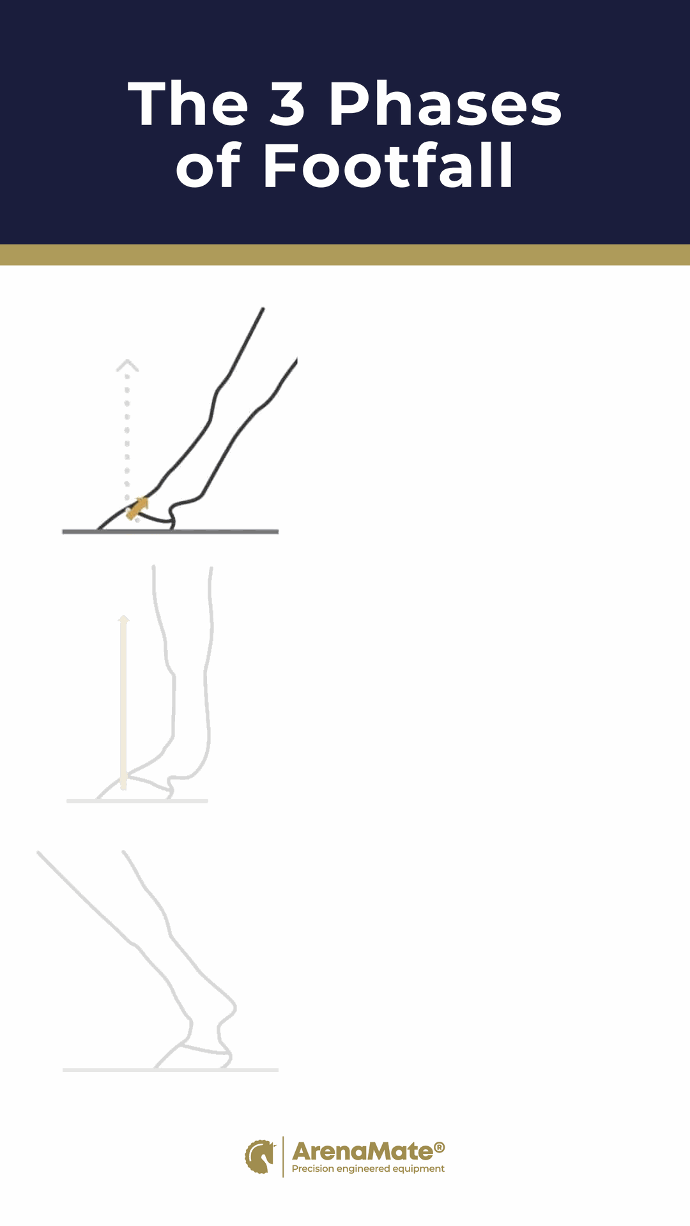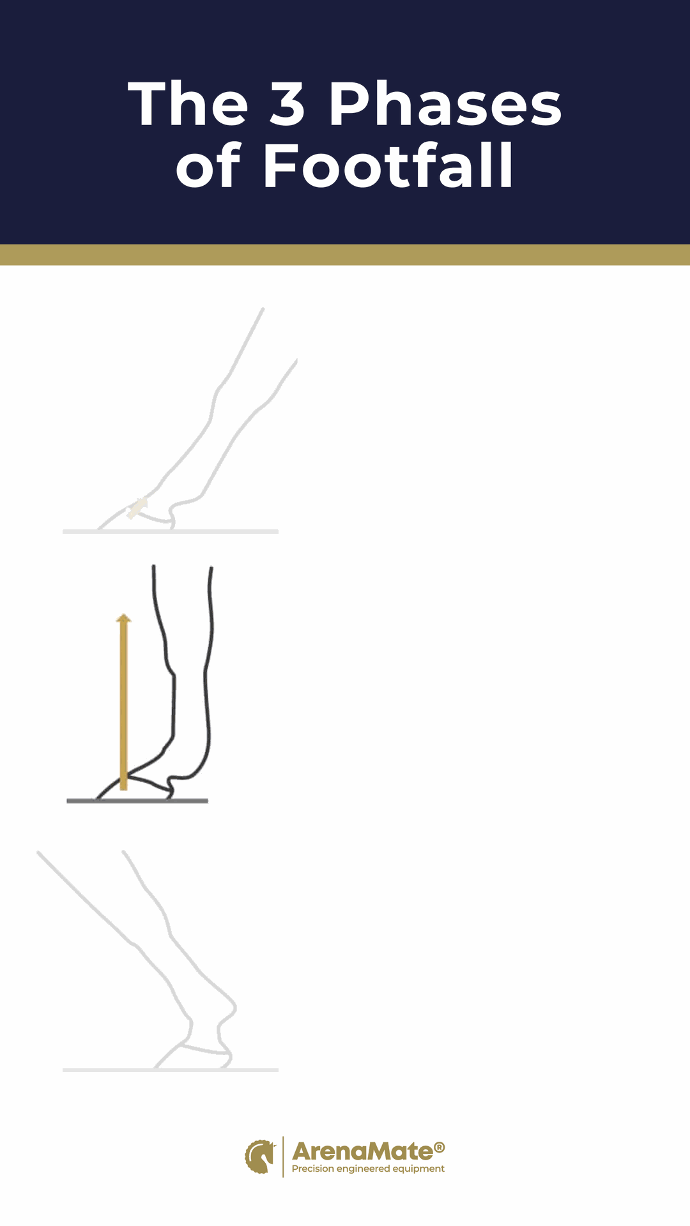Phase 1: Landing
In the landing phase, the hoof comes to a stop as it makes contact with the ground, sliding forwards slightly in to the surface as it does so. This movement and redistribution of weight causes compression between bones and joints in the leg. The impact of the landing itself causes shock waves to travel up the leg. These shock waves need to be evenly distributed through the riding surface in order to avoid a hard and harmful landing.

Phase 2: Loading
During the loading phase, the whole hoof makes contact with the ground and is forced to carry the full weight of both the horse and rider. A shock absorbing effect is created by the fetlock, flexor tendons and suspensory, whilst and increased pressure accumulates under the frog. stimulating blood circulation through the hoof.

Phase 3: Push off
During the push off phase, the heel rotates off the ground, rolling over the toe to push into the next stride. A good riding surface should provide a return energy.

How can your riding surface support the 3 phases?
- Landing - the riding surface must allow the shock of landing to be mostly absorbed and support the hoof mechanism through the next two phases. Most importantly, frequent levelling helps to remove surface compaction which would otherwise reduce shock absorbency.
- Loading - surface consistency including depth, moisture and mixture is important when supporting the hoof mechanism through this phase. Using the right maintenance tool will ensure that materials are mixed and distributed evenly across the surface helping to maintain a consistent depth.
- Push off - lastly the riding surface ability to return energy into the next stride without feeling "dead" is a a direct consequence of the the surface materials and maintenance practises. Rollers that slightly consolidate a surface after loosening and mixing helps to bring the return energy back to the surface.